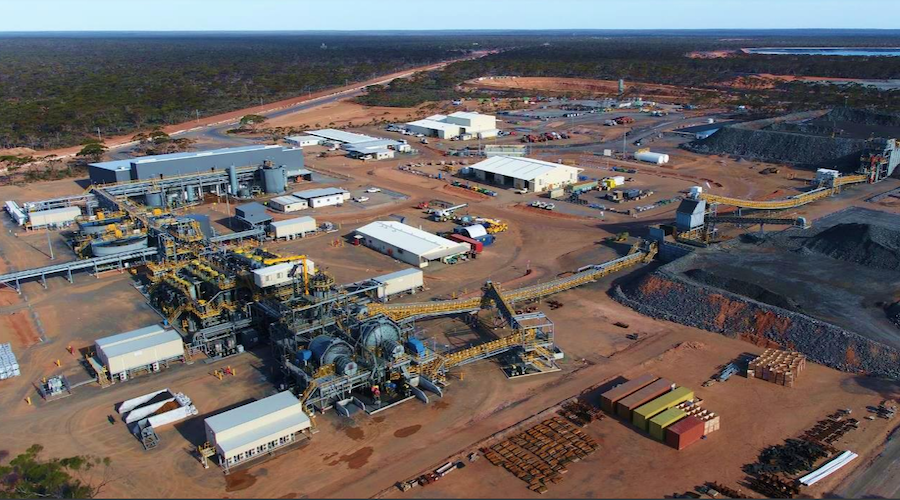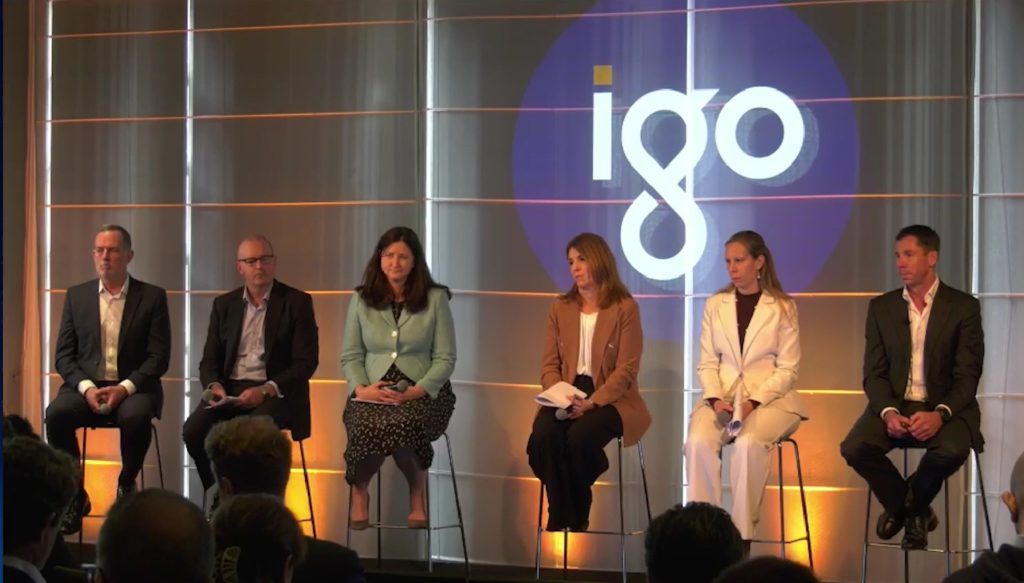
Battery metals producer IGO (ASX: IGO) has unveiled a new strategy for the next decade, which reaffirmed the company’s faith in the strength of the energy transition.
It’s been a tough 12 months for the Perth-based company, as evidenced by its share price, which has fallen by around 60% over the same period. The two main commodities the company mines, lithium and nickel, are at cyclical price lows and it suspended development of its Cosmos nickel development project in Western Australia (WA) in January.
Former Rio Tinto Aluminium boss Ivan Vella joined IGO as managing director in 2023 and has spent the past six months mapping out the company’s future.
IGO operates the Nova nickel-copper-cobalt mine in WA and is a 49% partner in Tianqi Lithium Energy Australia (TLEA) with Tianqi Lithium, which holds 51% of the Greenbushes lithium mine and 100% of the Kwinana lithium refinery, both in WA.
The “thoughtful” new strategy focuses on upstream mining of lithium, copper and nickel, which Vella described as the standouts in the battery metals space.
IGO also considered other battery commodities including graphite, cobalt, rare earths and manganese.
“Our conclusion is not to exclude them completely but to focus heavily on the three big value pools where we think we can generate the most impact,” Vella said.
Speaking to analysts in Sydney on Wednesday, Vella said the energy transition and the adoption of electric vehicles would drive demand for battery materials.
He said EVs in China had surpassed 40% market share and were now cheaper than internal combustion engine vehicles.
While adoption in China is advanced, it’s slower in the rest of the world, a trend IGO believes will evolve as adoption challenges are addressed.
“They’re different worlds with different drivers,” Vella said.
“We need to be building a business that’s resilient for both, that can take advantage of both.
“What we need to do is think about how we position our business to achieve returns through the cycle, in that context, where there is a lot of variation in the way these markets will develop.”
Prices for spodumene have fallen below $750 per tonne from as high as $6000/t in 2022.
While Vella described lithium as “ubiquitous”, he said it would be core to energy storage in the future.
“When we talk about lithium, there’s a lot of uncertainties, a lot of unknowns,” he said. “We think there’s a very attractive growth story there.
“The industry, we think, will scale three times in the next decade or so.”
IGO believes that sort of growth will require 80 new projects, based on a production rate of 20,000 tonnes of lithium carbonate equivalent.
Vella said supply side challenges were still underappreciated.
“At the current prices, there’s not a lot of incentive for anyone to build anything,” he said.
According to Vella, the lithium market was still immature, which would require players to “embrace volatility over the next decade” until demand growth tapered off.
“If you’re going to be in the business of lithium, we think it’s something you really need to come to terms with and gear around,” he said.
IGO will look to have a pipeline of lithium projects focused on upstream mining with “carefully constructed” downstream exposure.
Vella said returns in the downstream space would be more challenging.
“We recognise this is an integrated industry and we need to be very thoughtful about how we integrate with the industry and with our customers,” he said.
IGO already has copper exposure via Nova, which produced 9922t in the 12 months to June 30.
IGO’s desire for copper has been evident in the past with the company previously in talks with Glencore in 2022 to acquire the CSA copper mine in New South Wales, an asset eventually acquired by Metals Acquisition.
Vella acknowledged copper was a very important commodity for the energy transition.
“It’s attractive for us around diversification,” he said.
Chief financial officer Kathleen Bozanic said “every man and his dog” wanted more copper exposure.
“We don’t want to compete in the market – everyone is competing,” she said.
Vella suggested exploration success had the biggest potential for value uplift in copper.
Vella said nickel remained attractive, despite the flood of low-cost production coming from Indonesia.
“All of that creates a market that has some level of cap on it, in our view,” he said.
Nova still makes money at the current weak nickel price.
“It’s all about the quality of the resource,” Vella said.
“We wish we had a couple more [Novas]. We do know what good looks like in this space.”
IGO has initiated new studies at the mothballed Cosmos project, focused on what it would take to make the project cost competitive.
“The current view is unless we have a different mining technique there, it’s going to be difficult,” he said.
In August, IGO recorded a A$286 million ($192.5 million) impairment on its exploration assets.
However, exploration is a key pillar of the new strategy.
Newly appointed chief growth and commercial officer Brett Salt said he believed the company had several exploration advantages: tenure, people, relationships and propriety tools and data.
The company’s exploration package is extensive and covers 2% of Australia.
IGO will spend A$50-60 million on exploration this financial year, down from A$65-75 million in the 2024 financial year.
Salt said IGO would be more focused in its exploration programs.
“It’s not so much about the opportunity there, but the prioritisation,” he said.
IGO has a long history of transactions. It sold its 30% stake in the Tropicana gold mine in WA to Regis Resources in 2021 for A$903 million, which paved the way for its $1.4 billion entry into lithium later that year.
The 2022 acquisition of nickel miner Western Areas for A$1.3 billion has already been written down.
“Obviously, we recognise Western Areas didn’t go well,” Vella said. “It was not our greatest hour but we have changed from it and evolved.”
Bozanic said the company would use Greenbushes and Nova as the benchmarks when considering further acquisitions.
“We’re not in a hurry. We can afford to be patient because of the quality of those assets,” he said.
The looming closure of Nova in the next two years has had many speculating that IGO would turn to M&A.
In the absence of further acquisitions or a fast-tracked discovery, Vella conceded it was possible IGO may not have an asset it operated itself in the coming years.

“We’re not going to get to solving problems that haven’t emerged yet,” he said.
While all IGO’s assets are in WA, Vella said the board was open to considering other jurisdictions.
“Mining starts with the orebody and you’ve got to go where the orebody is,” he said. “We clearly recognise we may need to consider going further afield.”
As of June 30, IGO had A$468 million in cash and a A$720 million undrawn debt facility.
Despite the financial firepower, Bozanic said the company would be disciplined.
“It’s harder to find the right assets rather than getting the funding for those assets,” she said.
IGO will now turn its attention to developing what it is calling the IGO Playbook, which will essentially marry the new strategy with its culture.
Many analysts were hoping for more details on the CGP4 expansion at Greenbushes but Vella said the strategy day was “not the time nor place for it”.
Canaccord Genuity analyst Tim Hoff described the strategy day as a “top-down view of the world, as opposed to an investor day with specific detail”.
“The strategy provided framework but ultimately the elephant in the room remains the lack of value accretive expansion projects under IGO’s direct control,” he said.
“If IGO doesn’t get lucky on exploration, or finds something to buy, then its 2035 vision might remain just that.”